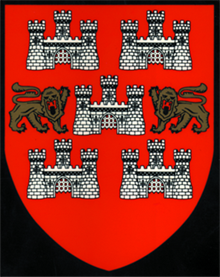New light on the rise and fall of Roman Winchester
A new significant publication gives us the first comprehensive picture of how Roman Winchester was created, flourished and declined.
Although there was an Iron Age hillfort on St Catherine’s Hill and a possible trading centre at Oram’s Arbour, Venta Belgarum was laid out on a new site that has persisted as the medieval and modern core of the city. It is likely that Roman army surveyors were responsible for laying out the streets, the radiating road system and a defensive circuit. It’s been suggested that that this was done in the first century AD, unusually early, when Rome’s ally, Togidubnus, the likely occupant of the magnificent villa complex of Fishbourne, was ruling the area, or after his death when the area was integrated fully into the province of Britannia.
Venta had innovations marking a new Romanised way of life, which usually included a complex of baths. Although this hasn’t yet been found for Winchester, an aqueduct of perhaps twenty-four-kilometres has been traced that would have brought water from the springs in the Itchen Stoke area, probably to feed Venta’s major buildings and perhaps the baths. Again, this magnificent engineering project is likely to have also been overseen by the Roman army.
The only intact Roman altar found in Winchester records the presence in Venta of Lucretianus who is described as a beneficiarius consularis, an army rank for someone seconded to report directly to the provincial governor himself - so a person of some importance who must have had a significant role in the new Roman town. The altar records that he restored “something” (perhaps a shrine) to the Italian, German, Gallic, and British Mother Goddesses most likely near to Jewry Street where it was found. Elsewhere the excavations at Lower Brook Street revealed the remains of a temple built not in the classical style but following the distinctive Romano-Celtic design; nearby was found in waterlogged conditions a wooden statuette of a woman which was probably associated with the temple. For image see right.
Roman Winchester flourished, with stone for building being brought from Bath, Roman food delicacies from the Mediterranean, and wine from the Rhineland as well as jewellery and glass from across the Roman Empire. Romanised houses were built in the city with mosaic floors and decorated wall plaster as well as central heating.
Documentary sources reveal increasingly turbulent times for Roman Britain in the later fourth century onwards both because of army revolts and incursions from “barbarian” invaders. In Winchester, the defences of the town were strengthened, and it appears from isotope analysis of bones from the Lankhills cemetery that people came to Venta from mainland Europe, perhaps as a local militia. From the late fourth century onwards, it seems that the town was in decline as trade dried up and buildings were not repaired. Although dating is difficult, some areas of the town were deserted, and others turned over to agricultural production, so by the fifth century Venta no longer functioned as the urban centre it once was although there are traces in the walled town and surrounding areas of people who used material culture that was Germanic.
It was not until the seventh century however that the royal house of Wessex commissioned the first monumental stone structure for two hundred years – the first stage of what became the great Old Minster, the precursor of the modern Cathedral. In the ninth century the town was given a new street layout, and the defences were refurbished. What Bede describes as Uintancaestir – ‘Walled place of Venta’ – then flourished as a political and cultural hub under King Alfred and his successors.
All this information has been published by Archaeopress in a magnificent two volume study – by Francis M. Morris and Martin Biddle - Venta Belgarum: Prehistoric, Roman, and Post-Roman Winchester, volume 3.i in the Winchester Studies series. The first volume reports on the prehistoric, Roman, and post-Roman archaeological phases of the 14 sites excavated in 1961–71 (directed by Professor Martin Biddle and involving 3000 volunteers from around the world), as well as listing and describing all significant observations of the defences, and the streets and buildings within the walls. The second volume presents about 4000 of the finds from the excavations of 1961–71, with additional significant objects from earlier excavations in Winchester and other Winchester collections. Finds are described and discussed by leading experts by era and type, with coins and selected pottery followed by objects grouped by industry or purpose.
This magnificent book in two volumes, is available as an e-book from Archaeopress at the very reasonable price of £16.00. The research and publication have been funded through generous support from Winchester City Council and Hampshire County Council as well as from trusts and individuals including the de Laszlo Foundation and the late Nigel McNair Scott. The publication will be launched at Winchester School of Art on Tuesday, 7th February 2024.


